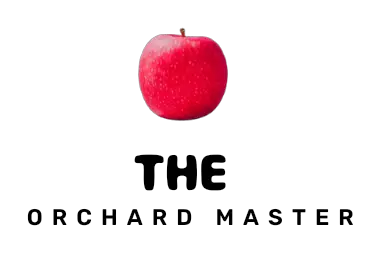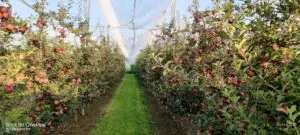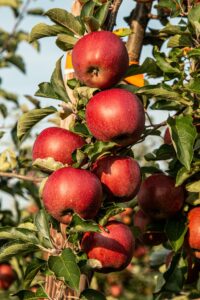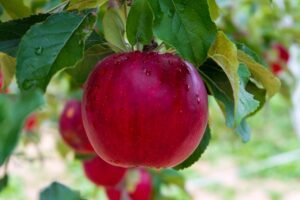Introduction
Apple trees are beloved for their shade, fragrance, and, of course, their delicious fruit. Biting into a crisp, juicy apple is a pleasure matched by a few things in life. However, apple growers and enthusiasts alike often encounter a phenomenon that can affect the appearance and overall quality of their fruit: russeting. Russeting refers to the formation of rough, corky, brownish-yellowed patches on the skin of apples. What causes this unsightly blemish, and can it be prevented? In this blog, we’ll delve into russeting, its effects on apple trees, and some prevention methods to maintain your apples’ aesthetic and edible quality.
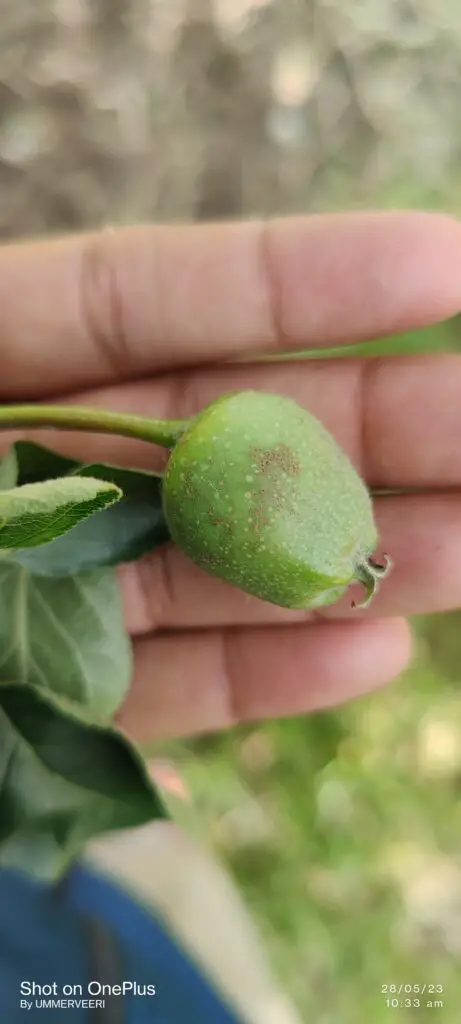
Causes of Russeting
Russeting in apple trees can be attributed to several factors, including:
- Environmental factors: Often, weather conditions like moisture, wind, and temperature fluctuations contribute to russeting. High humidity and wet conditions during the growing season encourage the formation of russet patches on apples. Moreover, frost during blossom time and sudden temperature changes during the maturation period can also instigate russeting.
- Nutritional imbalances: Sometimes, a deficiency or excess of specific nutrients, such as calcium, can cause russeting in apple trees. A balanced fertilizer application can help manage these imbalances.
- Genetic predisposition: Certain apple cultivars like Golden Russet, St. Edmund’s Pippin, and Egremont Russet are more prone to russeting, as the genetic makeup of these varieties has inherited higher sensitivity to environmental factors.
- Insect damage or disease: In some cases, insects like mites and thrips can cause damage to the apple’s skin, which can result in russeting. Additionally, diseases such as apple scab (Venturia inaequalis) can also lead to russeting.
Effects of Russeting on Apple Trees
Russeting mainly affects the apple’s appearance, leading to the formation of a rough, brownish surface that may be perceived as unattractive by some consumers. The texture of russeted apples is identified as being tougher and less smooth when compared to unaffected apples. Although the fruit’s cosmetic appeal may be compromised, the taste and flavor of russeted apples remain largely unchanged.
In some cases, russeting may even enhance the flavor of the fruit, resulting in a more intense or complex taste. Consumers who prefer apples mainly for their taste may have no qualms about eating russeted apples. However, if you are growing apples for sale, it’s essential to be aware that russeting can potentially impact your marketability.
Prevention Methods
- Choose resistant cultivars: If you’re planting new apple trees, consider selecting varieties that are less susceptible to russeting. Consult local nurseries or agricultural extension agents to determine which cultivars are best suited to your region and are less likely to develop russeting.
- Manage environmental conditions: Although you can’t control the weather, you can optimize your apple tree’s growing environment by providing sufficient drainage in your planting area to minimize excess moisture around the trees. Also, consider using irrigation methods like drip lines to avoid wetting the apple tree’s foliage while providing necessary water.
- Proper nutrition: Ensure your apple trees get the proper balance of nutrients, especially calcium. Conduct regular soil tests to determine nutrient levels and make any necessary adjustments based on the results. Avoid over-fertilizing, as excessive nitrogen levels can exacerbate russeting.
- Pest and disease management: Implement regular pest and disease management practices to minimize the risk of russet-inducing insects or diseases. If you spot any signs of pest infestation or disease, address them promptly to prevent further damage to the fruit.
Conclusion
While russeting on apple trees may not be entirely avoidable, it’s essential to understand its causes, effects, and how to minimize its occurrence in order to ensure the continued health and beauty of your apple trees. By implementing prevention and management strategies, growers and apple enthusiasts can optimize their apple-growing experience and produce apples with enhanced aesthetic and marketable qualities.
